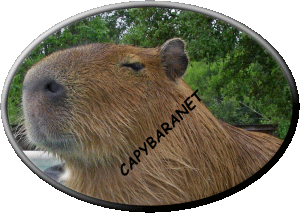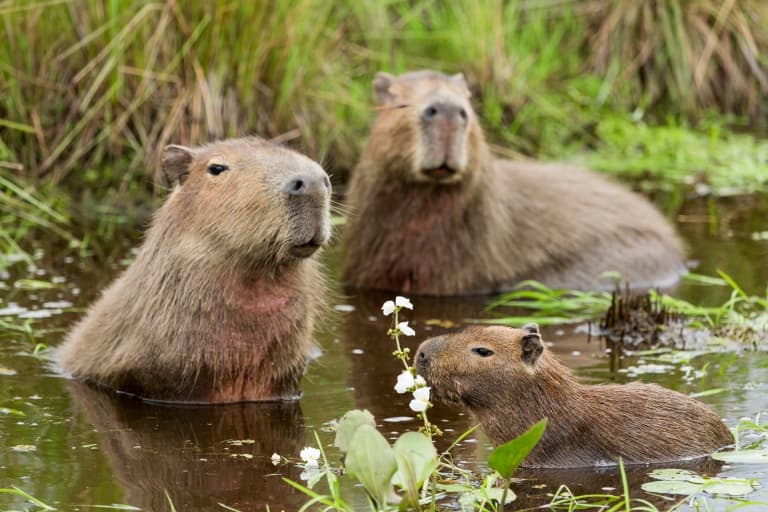

capybara facts!
To protect their skin, they seek shade in the water and mud. With course hair that does not cover all of their 4 foot (1.2 meters) long and two foot (.6 meters) wide body, the Capybara is susceptible to sunburn. Amazingly, Capybaras are able to stay submerged underwater for up to 5 minutes.
Capybaras are also known as water hogs. As the name suggests, they are usually found near swamps and water holes. This rodent from South America is the largest in the world. A capybara can get close to 80 kg (175 pounds) but as intimidating as it might look, they are mostly shy and tame creatures.
The capybara takes the title of world’s largest rodent. At about 50 cm (1.5 ft.) tall at the shoulder, 130 cm (4 ft.) in length, and 35-70 kg (75-150 lb.)
They are excellent swimmers and can remain completely submerged for up to five minutes.
Capybaras are the biggest rodents on earth!

this is gonna be a social media revival when I figure out how




